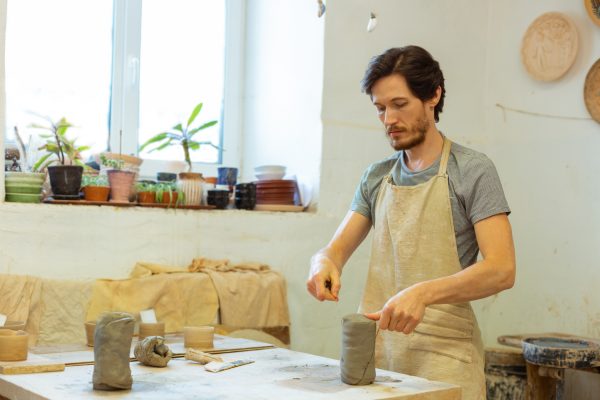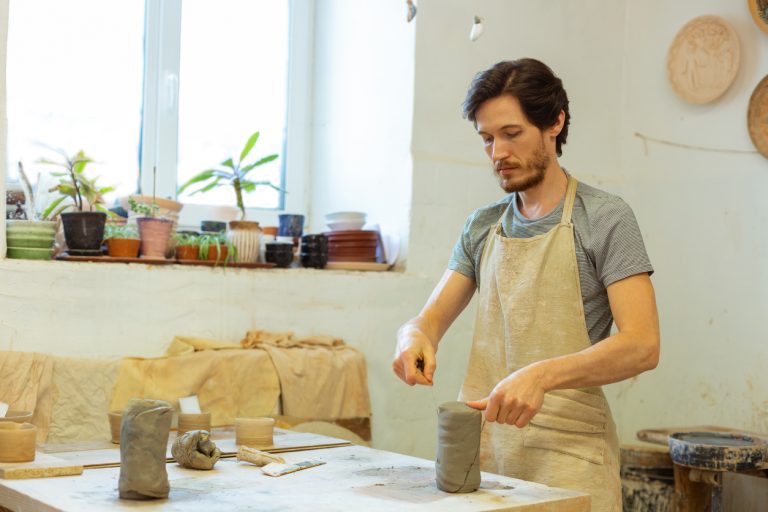Drawing and painting are wonderful ways to express yourself, and a lot of fun. But I’ve found it satisfying to get my hands dirty and build something that’s solidly three dimensional. You can move around it, mould and change it, feel its texture and weight. Sometimes, I like making things that don’t have to look ‘right’. So if you’re feeling a bit low on inspiration for making work on paper or canvas, it might be time to add another dimension. Here are my top tips experimenting with 3D art.

Make a mess with clay
The childish joy of squidging air-dry clay always gets my creativity flowing. You don’t need a wheel or kiln; you can create beautiful things by hand. Instead of trying to draw into clay, make new forms from a ball about the size of your fist, then pull and pummel it around. Try making a small dish by rolling the ball flat and pulling the clay upwards into a bowl shape.
Using household objects, create different textures and marks in the clay: the mesh from a bag of oranges, a butter knife, keys — whatever you can find! Your only expectation needs to be that you’ll learn something new about the possibilities of this ancient material.
Tip: To bond bits of clay together, scratch hatched lines into both surfaces with a blunt knife or clay tool, then use slip (water mixed with clay to create a loose ‘glue’).
Air-dry clay is great because you can leave it on a sunny windowsill, away from damp, and once it’s fully dry you can paint it with acrylics.
Get a glue gun
Glue guns are an easy and cheap way to experiment with found objects from around the house. Spend time foraging not just outside, but also in the garage and kitchen, for lightweight things you don’t mind sticking together. Lay them out on a plastic sheet or card, and play with the forms you can build: balance things precariously, rest them against each other and create impossible angles. A glue gun is an ideal tool to preserve this composite form once you’re happy with the arrangement, so you can create the illusion of objects defying gravity.
Spray and acrylic paints can give a more finished look, disguising the fact that your skyscraper is actually wood scraps and rusty forks. But you might find that the obviously found objects make your sculpture more interesting, giving a different view from every direction.
Drawing in wire
Be inspired by the work of sculptors Giacometti and Calder (among many others). Wedge some thin wire (about 1 mm diameter aluminium wire is easily malleable) into air-dry clay and explore the shapes you can create moving upwards and outwards from this base. Copper electrical wire also works, and can be combined with aluminium wire to add colour and texture.
Combine curves and sharp angles, recognisable shapes and abstract patterns, and even wrap wire around other objects to suspend them in mid-air!
You might want to wear gloves to avoid the occasional poke from a sharp end. Goggles are also helpful if you have long sections of wire bouncing near your face.
Exploring the possibilities of 3D has helped me refine my ideas and find new ways to express them, including on paper and canvas. Hopefully, you’re now feeling inspired to take your artistic skills into three dimensions. Let us know how your experiments go in the comments below!







